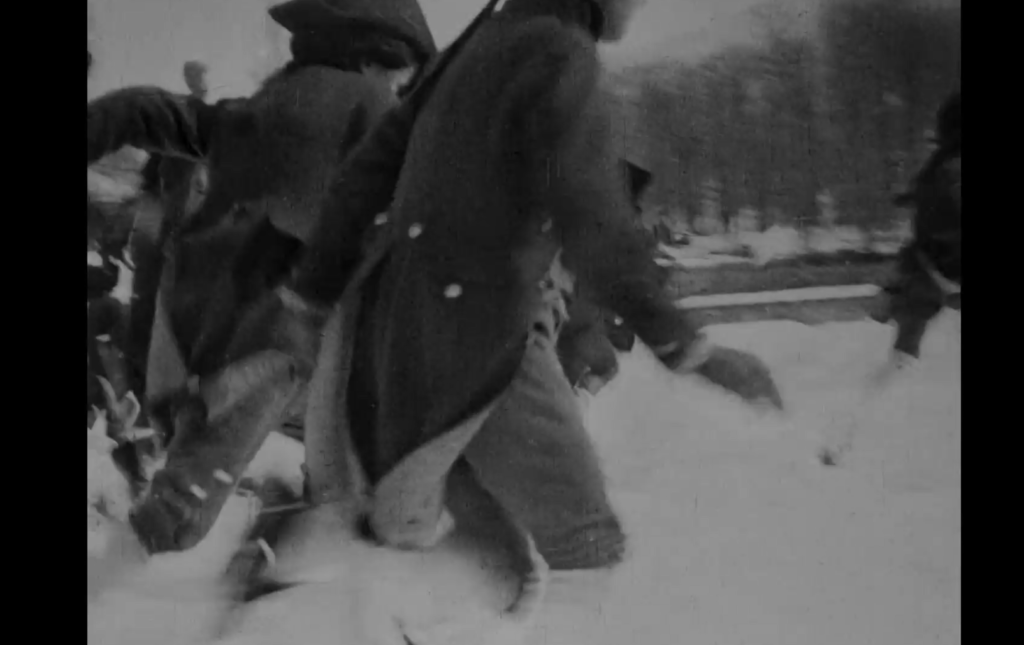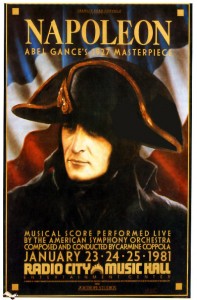|
Genres, Themes, Actors, and Directors:
- Biopic
- French Films
- French Revolution
- Historical Drama
- Military
- Silent Films
Response to Peary’s Review:
Peary asserts that no other silent films are as “visually spectacular” as those of director Abel Gance, pointing out his prodigious experimental techniques — including “split-screen photography, hand-held cameras, super-impositions, rapid-fire editing, color tinting, and a mobile camera” — all in a movie made decades before The New Wave movement of the 1960s. Throughout the lengthy narrative (consisting of “six major episodes, each a film unto itself”), Gance manages to effectively humanize this larger-than-life historical icon, who is depicted as “always in the right place at the right time to help his troubled country”: in one of the film’s most celebrated sequences, we first see a willful young Napoleon (Vladimir Roudenko) as he engages in a snowball fight with his peers, while the seeds of this infamous leader’s insecurity, fury, and diligence are clearly laid out before us; later, we see surprising vulnerability as Napoleon nervously woos divorcee Josephine de Beauharnais (Gina Manes) and her two children.
Apparently Gance was stymied in his original desire to depict the entire arc of Napoleon’s life, so the resulting “truncated” film simply shows one man’s rise to power without the inevitable balance of his fall. Nonetheless, this is actually oddly effective as a rhetorical technique; by the end of the film, as split-screen cinematography shows a close-up of Napoleon’s face surrounded on either side by triumphant battle scenes, we understand that this was a man who was all too human, but simultaneously larger than life.
Redeeming Qualities and Moments:
- Vladimir Roudenko as young Napoleon

- The justifiably famous “snowball scene”

- Prodigious use of clever camera techniques, including split-screen images

- Effective rapidfire editing
Must See?
Yes. This massive French epic will take some time to get through, but is worth watching at least once.
Categories
(Listed in 1001 Movies You Must See Before You Die)
|




2 thoughts on “Napoleon / Napoleon Vu Par Abel Gance (1927)”
I find this film easy to admire but very difficult to like.
Gance’s technique is admirable (although there should be more caution about claims that he “invented” all of the techniques that he deploys). My problem is with the portrayal of Napoleon. Curiously for an avowed pacifist (see ‘J’Accuse’), Gance seems to worship his war-mongering dictator. He also just isn’t very interesting.
Gance’s fascination with Napoleon was something he returned to in ‘Battle of Austerlitz’ which I’ve seen recently. Although the Napoleon of the later film is more humanised (the film starts with a servant joking about his height), he still becomes a hero and the actor who portrays him can’t breathe any life into the character. A film about the Retreat from Moscow would have shown more about the reality of Napoleon.
I prefer Gance’s ‘La Roue’ which has technical flair allied to a more involving plot – and the insane melodrama of his sound film ‘Venus Aveugle’ with his blind heroine taken on an imaginary voyage while her ship-prison never leaves port (“makes Stahl or Sirk look like Robert Bresson” as a great review on IMDB says).
First viewing. A once-must, as a one-of-a-kind experience.
I would probably have to agree with Simon (above) – in that, the way Gance presents his film is more gripping than its overall portrait of Napoleon (though Dieudonné is appropriately charismatic in his performance). I am not a historian by any means but the film definitely reflects hero worship – esp. in its last half-hour – and I would have preferred more of a fleshed-out, ‘warts and all’ depiction.
Still… those interested in the man himself can (as with most biopics) look (and read) elsewhere. I will, however, applaud a choice that was made for the version that I saw: for each intertitle, in the lower right-hand corner there is the insertion of ‘(Historical)’ whenever the events stated or the dialogue quoted are factual… and that’s actually most of the time throughout the film.
The version I saw was a 2016 restoration of the Kevin Brownlow reconstruction (2000), clocking in at 5 1/2 hours (with a score by Carl Davis). In the entire film, there is (early on) only one (very minor) missing sequence that is made note of and explained. I believe there are three intermissions – but I think the viewer (if watching at home) can feel free to take a break (between sequences) as needed, without losing the flow or any of the film’s impact. (I certainly took a number of breaks.)
When it comes to classic silent films, film fanatics are often told that there are certain must-see silent films – like Griffith’s ‘Intolerance’ and ‘Birth of a Nation’… which, though notable for certain reasons, can be slogs to get through. ‘Napoleon’ is not like that. Regardless of what one may feel are pros or cons about the vision of Napoleon, the film has a consistent energy and is quite often exciting… or at least still interesting in its quieter sections.
I believe I have also seen Gance’s ‘La Roue’ (which Peary omits) and, as I recall, it is also a film of considerable value and interest.